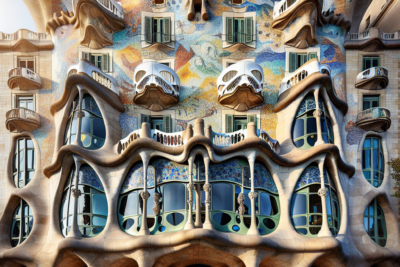
- The Architectural Genius of Antoni Gaudí: Crafting Sagrada Familia
- Exploring the Symbolism Behind Sagrada Familia's Design Elements
- The Ongoing Construction of Sagrada Familia: A Historical Perspective
- Cultural Significance of Sagrada Familia in Barcelona's Identity
- Visiting Sagrada Familia: Tips for an Unforgettable Experience
- The Influence of Sagrada Familia on Modern Architecture Trends
The Sagrada Familia, a masterpiece by architect Antoni Gaudí, stands as a symbol of Barcelona's rich cultural heritage and architectural innovation. As we delve into The Fascinating History of Sagrada Familia: A Testament to Barcelona's Iconic Landmark, we discover how this basilica has evolved over more than a century, capturing the imaginations of millions around the world.
Construction began in 1882, and despite its ongoing development, the Sagrada Familia has become a UNESCO World Heritage site and one of the most visited monuments in Spain. This iconic structure embodies Gaudí's unique vision and serves as a testament to the enduring spirit of creativity and faith that defines Barcelona.
The Architectural Genius of Antoni Gaudí: Crafting Sagrada Familia
Antoni Gaudí's architectural genius is vividly illustrated in the design of the Sagrada Familia, where he masterfully integrated natural forms and religious symbolism. His approach to architecture was deeply influenced by his love for nature, which is reflected in the organic shapes and intricate details of the basilica. Gaudí believed that architecture should harmonize with the environment, leading to the incorporation of elements like tree-like columns and flowing lines that mimic the forms found in nature.
The structural innovation of the Sagrada Familia is noteworthy, as Gaudí employed techniques such as catenary arches and hyperboloid structures. These methods not only enhance the aesthetic appeal but also provide the necessary stability to support the monumental weight of the basilica. Gaudí's pioneering vision paved the way for modern construction techniques, making the Sagrada Familia a remarkable example of architectural evolution.
- Naturalism: Use of organic shapes inspired by nature.
- Symbolism: Incorporation of Christian iconography throughout the design.
- Innovative Materials: Introduction of new building materials and techniques.
- Unity with Surroundings: Design that integrates with the landscape of Barcelona.
The Sagrada Familia is not just a building; it is a living testament to Gaudí's creative vision and his relentless pursuit of perfection. Each facade and tower tells a story, inviting visitors to explore the depths of his architectural philosophy. Gaudí's work on this basilica transcends mere construction, ultimately serving as a bridge between spirituality and the natural world, making it an enduring symbol of Barcelona's cultural identity.
Exploring the Symbolism Behind Sagrada Familia's Design Elements
The design elements of the Sagrada Familia are steeped in profound symbolism, reflecting Gaudí's vision of merging spirituality with nature. The basilica's facades, each representing different aspects of Christ's life, serve not only as artistic expressions but also as narratives steeped in Christian iconography. For instance, the Nativity Facade emphasizes joy and creation, while the Passion Facade conveys themes of suffering and redemption.
One of the most striking features of the Sagrada Familia is its use of light as a symbolic element. Gaudí designed the interior to allow natural light to filter through stained glass windows, creating an ethereal atmosphere that changes throughout the day. This interplay of light symbolizes the divine presence, inviting visitors to reflect on the connection between the spiritual and the earthly realms.
- Spiral Towers: Representing the ascent to heaven, each tower is dedicated to a different religious figure.
- Nature-Inspired Columns: Mimicking trees, they symbolize the connection to the natural world and God's creation.
- Geometric Shapes: The use of hyperboloids and catenary curves reflects the harmony of nature's forms.
Ultimately, the Sagrada Familia stands as a remarkable architectural journey that invites exploration of its many layers of meaning. Each design element is intentionally crafted to inspire awe and contemplation, making it a living expression of faith and artistry that continues to captivate visitors from around the world.
The Ongoing Construction of Sagrada Familia: A Historical Perspective
The ongoing construction of the Sagrada Familia is a remarkable story that intertwines dedication and artistry, reflecting Barcelona’s commitment to preserving Gaudí's legacy. Since its inception in 1882, the basilica has faced numerous challenges, from funding shortages to the impact of the Spanish Civil War. Yet, despite these obstacles, construction has continued, fueled by a passionate community that believes in Gaudí's vision.
As of today, the Sagrada Familia is projected to be completed by 2026, marking the centenary of Gaudí's death. This timeline highlights the immense complexities involved in constructing such an intricate masterpiece. The current phase focuses on fine-tuning the remaining elements, ensuring that every detail aligns with Gaudí's original designs, which include:
- Completion of the central tower: This tower will be the tallest, reaching 172.5 meters, symbolizing Christ.
- Finalization of facades: Each facade features unique thematic elements that narrate different stages of Christ's life.
- Enhanced visitor experience: Modern technologies are being incorporated to manage the growing number of tourists.
The ongoing construction not only speaks to the architectural ambition but also to the collective effort of artisans and laborers who have dedicated their lives to this project. Their craftsmanship echoes the profound spirituality that Gaudí infused into every stone, making the Sagrada Familia not just a building, but a living monument to faith, creativity, and the passage of time.
Throughout its history, the construction has adapted to modern methods while maintaining the original vision. This blend of innovation and tradition is evident in the implementation of contemporary technologies, which allow for precision in replicating Gaudí’s intricate designs. Such advancements ensure that the Sagrada Familia continues to evolve as a symbol of Barcelona's dynamic spirit, while still honoring its past.
Cultural Significance of Sagrada Familia in Barcelona's Identity
The Sagrada Familia is a pivotal element of Barcelona's identity, resonating with both locals and visitors alike. It encapsulates the city’s rich history and artistic spirit, acting as a cultural beacon that draws millions each year. As an emblem of Catalan modernism, the basilica signifies not only architectural brilliance but also a profound connection to the community's heritage and aspirations.
In addition to its architectural grandeur, the Sagrada Familia represents a symbol of faith and devotion, reflecting the spiritual journey of its creator, Antoni Gaudí. This connection to spirituality enhances its cultural significance, making it a sacred space for reflection and inspiration. The basilica serves as a reminder of the values and beliefs that underpin Barcelona’s vibrant culture.
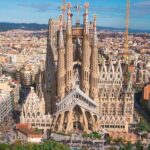 Sagrada Familia: Explore Under-Construction Basilica
Sagrada Familia: Explore Under-Construction BasilicaThe ongoing construction of the Sagrada Familia ensures its relevance in contemporary society, fostering a sense of unity among Catalans who see it as a collective project. This endeavor highlights the community’s commitment to preserving their cultural legacy while adapting to modern times. As the basilica nears completion, it continues to embody the city's resilience and creativity, inspiring future generations.
Moreover, the Sagrada Familia's influence extends beyond architecture; it plays a vital role in the local economy and tourism. The influx of visitors contributes significantly to the city's vibrancy, supporting local businesses and cultural initiatives. Its presence in global media and art further cements its status as a hallmark of Barcelona, making it an integral part of the city's identity.
Visiting Sagrada Familia: Tips for an Unforgettable Experience
When visiting the Sagrada Familia, it is essential to plan ahead to ensure an unforgettable experience. First, consider purchasing your tickets online in advance to avoid long lines at the entrance. This not only saves you time but also guarantees access to the specific time slot you desire. Additionally, try to visit during off-peak hours, such as early in the morning or later in the evening, for a more serene atmosphere.
Another tip for an enriching visit is to take a guided tour. Expert guides can provide valuable insights into the architectural innovations and the profound symbolism embedded in the basilica's design. Whether you opt for an audio guide or a live tour, engaging with the history and meaning behind the Sagrada Familia will deepen your appreciation for this iconic landmark.
Don't miss the opportunity to explore the surrounding area, as the Sagrada Familia is situated in a vibrant neighborhood filled with charming cafes and shops. Consider bringing a picnic to enjoy in nearby parks, where you can take in the breathtaking views of the basilica while reflecting on its grandeur. Lastly, make sure to allocate enough time to fully explore both the interior and exterior, as each facade and detail tells a unique story.
For those keen on photography, the best times to capture the Sagrada Familia are during golden hour, just after sunrise or before sunset. The interplay of light and shadow enhances the structure's intricate designs, resulting in stunning photographs. Always remember to be respectful of the sacred space, allowing others to share in the experience of this magnificent testament to Barcelona's architectural heritage.
The Influence of Sagrada Familia on Modern Architecture Trends
The Sagrada Familia has significantly influenced modern architecture trends, particularly in the realm of organic design. Architects today draw inspiration from Gaudí's integration of natural forms and structures that reflect the environment. This approach encourages a shift from conventional designs to more fluid and dynamic architectural expressions that resonate with their surroundings, making nature a central element in contemporary projects.
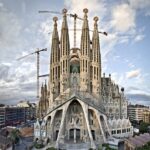 The Fascinating History of Sagrada Familia in Barcelona: A Brief Overview
The Fascinating History of Sagrada Familia in Barcelona: A Brief OverviewMoreover, the Sagrada Familia showcases the importance of light and space in architecture, inspiring modern designers to prioritize natural illumination in their work. The way Gaudí utilized stained glass and strategically placed openings to create a harmonious play of light has encouraged many architects to explore similar techniques. This has resulted in buildings that not only serve functional purposes but also uplift the human spirit through their ethereal atmospheres.
- Structural Innovation: The use of catenary arches and hyperboloid forms has motivated architects to experiment with new materials and designs.
- Symbolism: Modern architects often incorporate narrative elements into their design, much like Gaudí did with the Sagrada Familia.
- Sustainability: Gaudí's connection with nature has propelled a movement toward eco-friendly architecture that harmonizes with the natural environment.
Lastly, the Sagrada Familia's enduring legacy can be seen in the rise of multi-sensory experiences in architecture. Today’s designers aim to create spaces that engage all the senses, inspired by Gaudí's work, which encourages visitors to connect emotionally with their surroundings. This holistic approach to architecture fosters environments that are not only visually striking but also resonate on a deeper, experiential level.
If you want to know other articles similar to The Fascinating History of Sagrada Familia: A Testament to Barcelona's Iconic Landmark you can visit the category WHERE YOU CAN GO.
Deja una respuesta

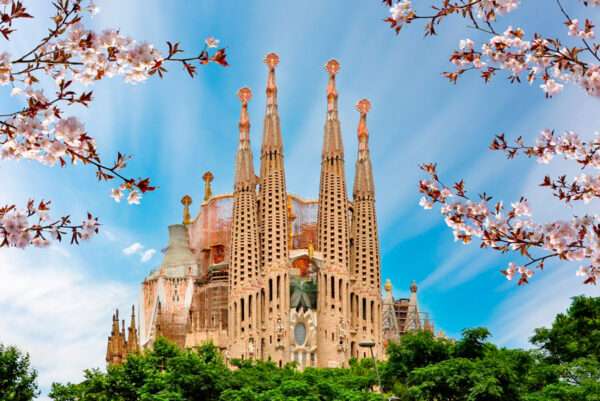
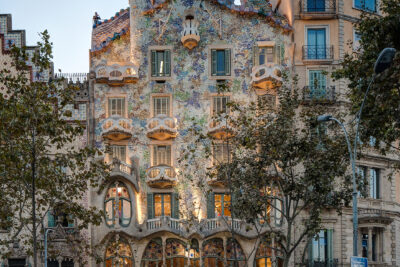
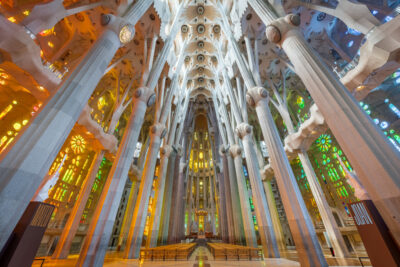
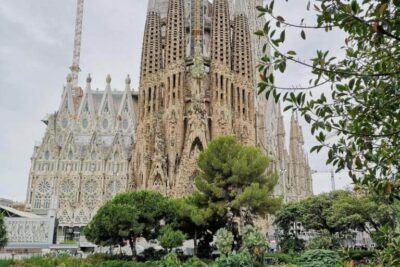
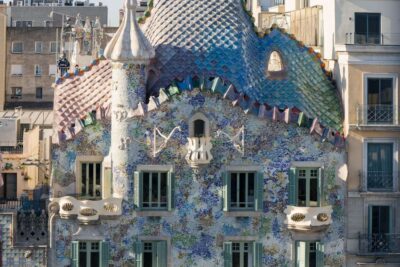
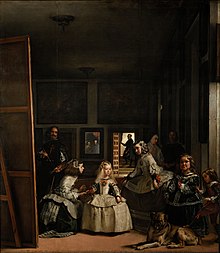
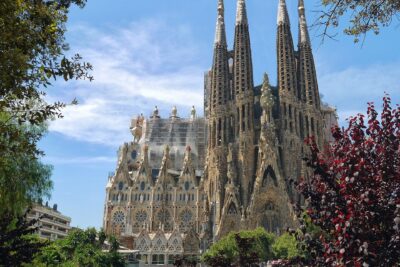
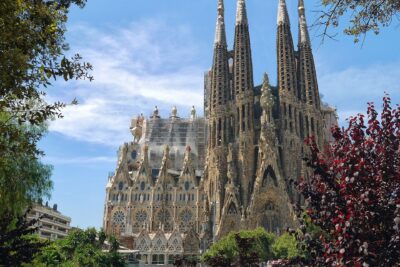
Read more!